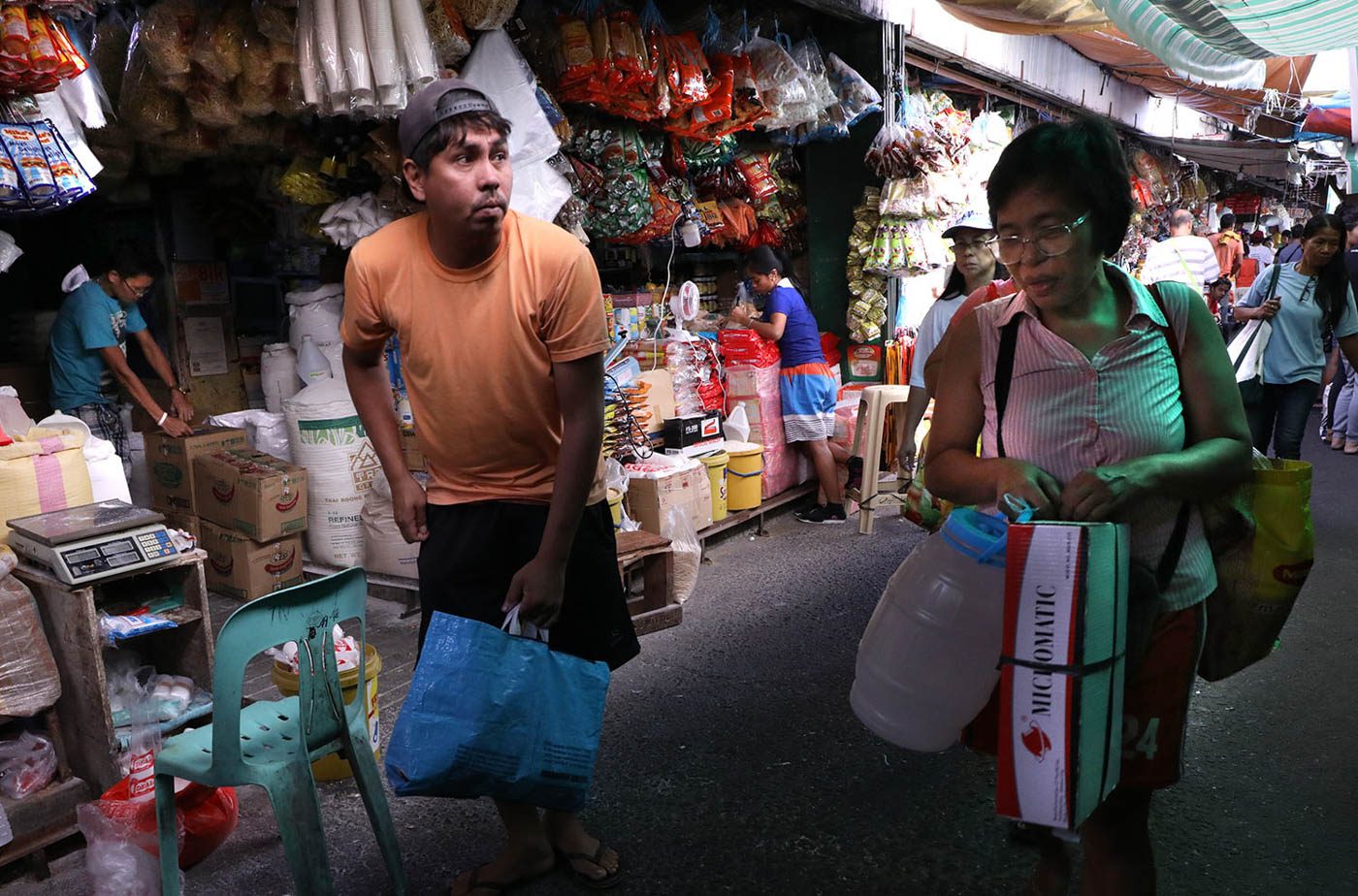SUMMARY
This is AI generated summarization, which may have errors. For context, always refer to the full article.

MANILA, Philippines (3rd UPDATE) – Prices of goods continued to move within the government’s target band, as inflation hit 2.6% in February, the Philippine Statistics Authority said on Thursday, March 5.
February’s inflation remained within the 2% to 4% range and was lower than the 2.9% recorded in January, as global demand for oil slowed down amid the novel coronavirus outbreak that started in China. (READ: Coronavirus compounds Gulf economic woes as oil prices slump)
Economists previously noted that Filipinos got wary about the global health emergency and avoided malls, which led to lower consumption and businesses reducing prices.
The downward trend in February was attributed to the slower annual increase in transportation costs.
“Price pressures abated in February as global crude oil prices plunged, dragging on transport costs and utilities. Global crude oil prices tanked to as low as $44 per barrel in late February as the [coronavirus] shut down China, prompting a possible production cut from OPEC (Organization of the Petroleum Exporting Countries) members,” said ING Bank Manila senior economist Nicholas Mapa.
Economists also said that the downgrade in Taal Volcano’s alert level effectively dissipated the upward pressure on food prices.
The year-to-date inflation now stands at 2.8%.
Food and non-alcoholic beverages slowed down to 2.1% last month. In addition, annual increments decelerated in the indices of alcoholic beverages and tobacco at 18.2%; and housing, water, electricity, gas, and other fuels, 1.7%.
Inflation for the country’s food index remained at 2.1% in February, slower than the 4.2% in the same month last year.
Inflation in the National Capital Region and areas outside the capital decelerated further to 2% and 2.8%, respectively.
The central bank is widely expected to again cut interest rates to shield the economy from the global economic slowdown. In general, cutting interest rates encourages people to spend more and boost the economy. (READ: IMF chief calls for all-out offensive to counteract epidemic)
However, Bangko Sentral ng Pilipinas (BSP) Governor Benjamin Diokno earlier said in the Manila Times business forum on Tuesday, March 3, that easing monetary policy may not do the trick, since the fear of going out in public outweighs the incentives that lower interest rates offer.
“Government spending will boost the economy,” Diokno had said.
He also said on Wednesday, March 4, that the BSP Monetary Board sees no need to hold an emergency meeting to tweak interest rates, after a surprise rate cut by the United States Federal Reserve.
“We think that Diokno will hold off on rate cuts until the May meeting as he awaits [1st quarter] GDP (gross domestic product) data, pointing to his ‘preemptive’ rate cut in February as sufficient action for the time being,” Mapa said. – Rappler.com
Add a comment
How does this make you feel?
There are no comments yet. Add your comment to start the conversation.